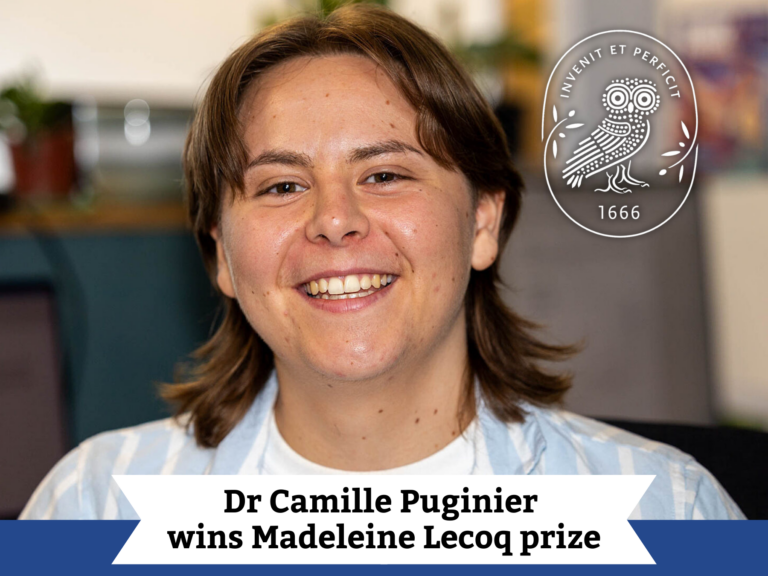Pathogen employs repeat module to mimic core plant enzyme
A new publication by Wenbo Ma's research group discovers that pathogen protein modularity enables the elaborate mimicry of a host phosphatase.

Journal cover art submission to Cell by Hsuan Pai depicting the exciting discovery about plant pathogen evolution.
The mischievous Phytophthora carrying a “LWY” toolkit is holding a screwdriver handle (PP2A core enzyme) from the host and the head (LWY effectors) from pathogen to dismantle plant cell.
Pathogens have evolved an extensive armoury of proteins to help them infect host plants. These virulence proteins, called effectors, experience a high degree of selection pressure in order to overcome the evolution of disease resistance in plants. Pathogen effector repertoires are very diverse for this reason.
Understanding why certain units have remained conserved, or even started repeating, within effector genes during the evolutionary arms race between host and pathogen, has been incredibly enlightening to those within the Molecular Plant Microbe Interactions (MPMI) research community.
For Wenbo Ma's research group, a particular interest was sparked in 2019 (before joining The Sainsbury Laboratory) when it was discovered that regularly arranged repeat units with several conserved amino acids– called (L)WY motifs - were prevalent in a genus of pathogens that is notoriously successful at infecting plants, Phytophthora.
Read their 2019 paper Structural analysis of Phytophthora suppressor of RNA silencing 2 (PSR2) reveals a conserved modular fold contributing to virulence | PNAS.
The findings revealed that many effectors are chimeras of (L)WY units with diversified surface residues, thus likely impacting their capacity to interact with plant molecules. This made researchers curious as to whether (L)WY units or unit combinations served as specific functional modules within effector proteins in helping them manipulate the host as well as their ability to evolve.
Now, a newly published paper by Hui Li, a postdoctoral researcher in Wenbo Ma’s group, delivers fascinating insights into these questions. Along with colleagues from Wenbo’s group, the TSL Proteomics team and collaborators from the China Academy of Sciences, the authors were excited to discover that molecular mimicry is at play.
In their study they used the PSR2 effector of the soybean pathogen, P. sojae, as a model to investigate the role of (L)WY units in virulence function and effector evolution. They found that PSR2 associates with the PP2A plant host enzyme, a major protein phosphatase, and alters the phosphorylation of specific substrates to promote disease.

A graphical abstract summarising the exciting results of the study.
Phytophthora causes enormous losses in agriculture and forestry with one species, Phytophthora infestans,well-known for causing the late blight pandemic during the Irish potato famine. Each Phytophthora species encodes hundreds of effector proteins that collectively have essential roles in manipulating host cellular processes and facilitating disease development.
Crystal structure and biochemical analysis of this PSR2-PP2A protein complex revealed a specific (L)WY-LWY combination behind the competitive recruitment of the host PP2A core enzyme. Using the structural biology analysis and biochemistry assay confirmation, the researchers identified 12 additional effectors in two Phytophthora species that also harbour this (L)WY-LWY functional module and associate with the host enzyme PP2A.
These results reveal that:
- Phytophthora effectors have conserved tandem repeats as functional modules.
- A specific (L)WY-LWY combination efficiently hijacks the host PP2A core enzyme.
- Multiple effectors adopt this module to form functional PP2A holoenzyme.
-These effectors regulate different sets of phosphoproteins to promote virulence.
The essential host phosphatase PP2A appears to be a key susceptibility target of Phytophthora pathogens, which they hijack through molecular mimicry. As a major protein phosphatase, PP2A regulates a large variety of cellular processes and its dysfunction is associated with many diseases. In fact, human PP2A is a ubiquitous virulence target by oncogenic viruses.

This publication represents one of the first examples of how functional diversity could be achieved and novel virulence activities arise in a pathogen effector repertoire. It provides insight into how protein modularity may promote the evolution of novel host manipulation activities in a pathogen.
First author, Hui Li, says “I am very excited to publish my first paper in the research field of Molecular Plant Microbe Interaction after about four years. This project provides me with the opportunity to gain new knowledges and techniques and collaborate with so many talented and professional scientists at Wenbo’s group and TSL. I look forward to further exploration in the MPMI field.”

Wenbo Ma's research group having a well-deserved break outside of the lab. Photo by Wenbo Ma.
Great research is a team sport
A special thanks to the TSL Proteomics team who provided strong and professional support, in particular, the quantitative phosphoproteomic analysis using liquid chromatography-mass spectrometry (LC-MS) which provided very persuasive results. Also, a special thanks to our collaborator Prof. Yanli Wang at China Academy of Sciences, whose team resolved the effector-PP2A protein complex structure, which provides important insight into the virulence mechanism of the effectors.


